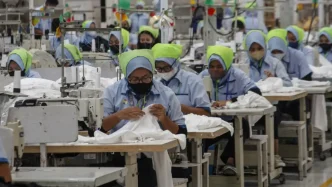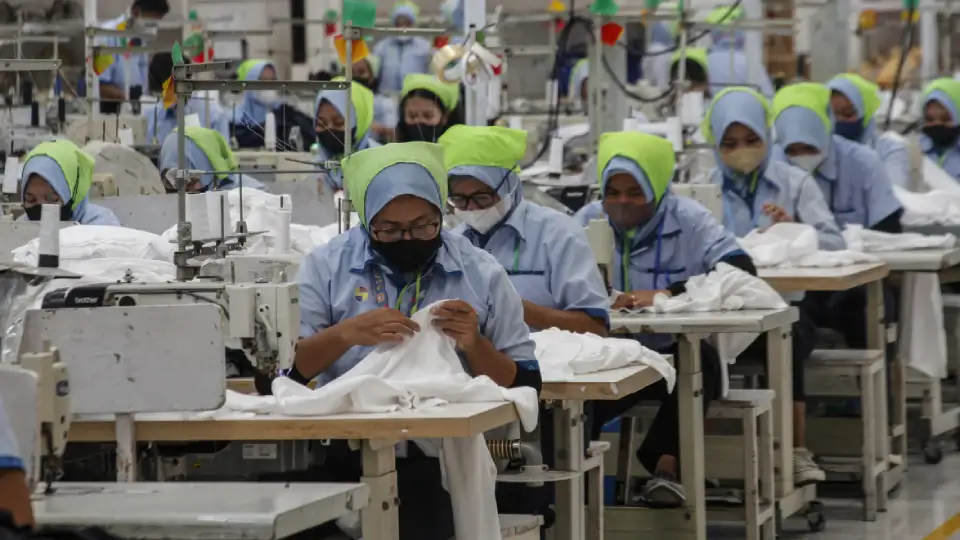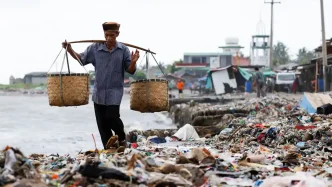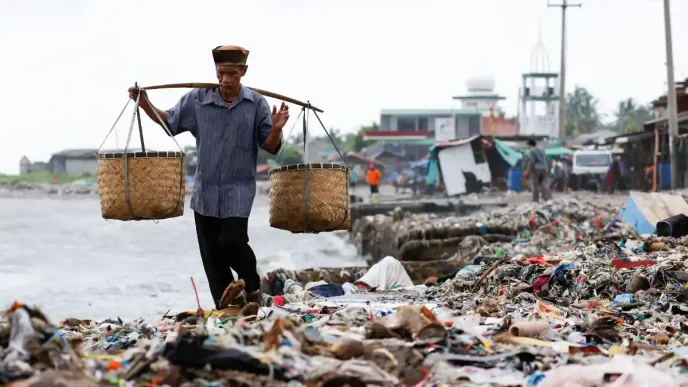Indonesia is grappling with a significant rise in layoffs in the first half of 2025, with the Manpower Ministry reporting a 32.1 percent increase compared to the same period in 2024. A total of 42,385 workers lost their jobs between January and June, up from 32,064 the previous year, signaling deepening economic pressures across key industries such as manufacturing, retail, and mining. As the country navigates weaker demand and shifting business models, the wave of job cuts raises questions about the resilience of its labor market and the government’s response to growing unrest.
Manufacturing Sector Bears the Brunt
The manufacturing sector, a cornerstone of Indonesia’s economy, has been hit hardest by the layoffs, with 22,671 workers losing their jobs in the first six months of 2025. This sector alone accounts for a substantial portion of the national GDP, particularly in industrial hubs like West Java, which contributes around 60 percent of the country’s manufacturing output. Central Java and Banten, also key industrial centers, follow closely, with 10,995 and 4,267 workers laid off respectively during the same period.
The decline in manufacturing activity is reflected in Indonesia’s Purchasing Managers’ Index (PMI), which fell to 46.9 in June from 47.4 in May, marking the second-lowest reading since August 2021. Remaining below the 50-point threshold for the third consecutive month, the PMI indicates a contraction in the sector. Reports accompanying the PMI data highlight a sharp reduction in employment, with firms scaling back hiring at the fastest rate in nearly four years due to soft domestic demand and reduced output.
Manpower Minister Yassierli has pointed to a combination of factors driving the layoffs. Speaking to reporters, he noted that market downturns, production cuts, shifts in business models, and internal corporate issues, including industrial relations, are all contributing to the surge. The minister’s remarks underscore the complexity of the challenges facing Indonesia’s workforce, as companies struggle to adapt to changing economic realities.
Regional Impact and Economic Implications
The regional distribution of layoffs reveals a concentration of job losses in Indonesia’s industrial heartlands. Central Java, home to a significant share of manufacturing activity, recorded the highest number of layoffs, followed by West Java and Banten. These provinces host dense clusters of factories and industrial zones, with West Java alone serving as the epicenter of national manufacturing output. Banten benefits from heavy industries and the strategic Merak Port in Cilegon, while Central Java’s economy heavily relies on manufacturing as a driver of provincial GDP.
The economic implications of these layoffs extend beyond individual workers and their families. The informal sector, which plays a substantial role in Indonesia’s economy, remains unaccounted for in the Manpower Ministry’s data. While the official figures provide a critical snapshot of employment trends in formal industries, they do not capture the full scope of job losses across the country. This gap raises concerns about the broader impact on national economic activity and the potential for increased labor unrest as more workers face uncertainty.
Government Response and Public Concern
Amid growing job losses, the government faces mounting pressure to address the crisis. Anwar Sanusi, head of the Manpower Ministry’s planning and development agency, acknowledged the sharp rise in layoffs at the start of the year due to mass redundancies at several companies. However, he also highlighted a notable improvement in monthly figures, with layoffs dropping by 65 percent from 4,702 workers in May to 1,609 in June. While the reasons for this decline are still under review, Sanusi suggested that unresolved layoff processes might be a contributing factor.
Despite this monthly improvement, the overall trend remains troubling. Minister Yassierli has previously considered delaying the release of monthly layoff data to temper public concern, reflecting the government’s awareness of the potential for these figures to fuel pessimism. The minister’s hesitation points to a delicate balancing act between transparency and maintaining public confidence in an increasingly challenging economic environment.
Broader Economic Context and Industry Struggles
The surge in layoffs comes against a backdrop of broader economic difficulties for Indonesia. Manufacturers remain pessimistic about growth prospects, weighed down by sluggish domestic demand that continues to impact output, purchasing, and employment. The PMI report’s findings of shrinking employment for the second time in three months underscore the severity of the downturn, with firms cutting jobs at a pace not seen in nearly four years.
Beyond manufacturing, the wholesale and retail trade sector, as well as mining and quarrying, have also recorded significant job losses. These industries, critical to Indonesia’s economic fabric, face their own set of challenges, from declining consumer spending to global commodity price fluctuations. The convergence of these pressures paints a grim picture for workers across multiple sectors, many of whom are now grappling with an uncertain future.
Human Stories Behind the Numbers
Behind the stark statistics are the personal stories of thousands of workers whose lives have been upended by layoffs. In Sukoharjo, Central Java, textile factory workers gathered on February 28, 2025, to listen to a farewell speech as mass layoffs took effect. The emotional toll of such events is palpable, as individuals who have dedicated years to their roles face the daunting task of finding new employment in a contracting job market. For many, the loss of income threatens not only their livelihoods but also their ability to support families and communities.
These scenes are becoming increasingly common across Indonesia’s industrial zones, where the ripple effects of corporate downsizing are felt deeply. Workers in Central Java, West Java, and Banten are at the forefront of this crisis, bearing the brunt of economic shifts that are often beyond their control. As factories scale back operations or shift business models, the human cost of these decisions becomes ever more apparent.
Looking Ahead: Challenges and Opportunities
As Indonesia navigates this wave of layoffs, the path forward remains uncertain. The government’s efforts to mitigate public concern while addressing the root causes of job losses will be critical in shaping the country’s economic trajectory. With the manufacturing sector showing persistent signs of contraction and other industries facing similar headwinds, policymakers face the dual challenge of stimulating demand and supporting displaced workers.
Potential solutions could include targeted interventions to bolster domestic demand, incentives for companies to retain or retrain workers, and enhanced support for the informal sector, which remains a vital yet often overlooked part of the economy. However, the effectiveness of such measures will depend on the government’s ability to act swiftly and in coordination with industry stakeholders.
For now, the outlook for Indonesia’s workforce remains clouded by economic uncertainty. As layoffs continue to mount, the resilience of the country’s labor market will be tested, with implications for both economic stability and social cohesion. The coming months will reveal whether the government can chart a course toward recovery or if the challenges of 2025 will deepen into a more protracted crisis.
















